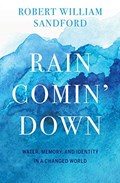Narrow Results By
Art inspired by the Canadian Rockies, Purcell Mountains and Selkirk Mountains 1809-2012
https://archives.whyte.org/en/permalink/catalogue20143
- Medium
- Library - Book (including soft-cover and pamphlets)
- Published Date
- 2012
- Author
- Townshend, Nancy
- Publisher
- Calgary : Bayeux Arts
- Call Number
- N T69 A78
1 website
- Author
- Townshend, Nancy
- Responsibility
- Nancy Townshend
- Publisher
- Calgary : Bayeux Arts
- Published Date
- 2012
- Physical Description
- vi, 136p, 40 plates : ill., maps
- Subjects
- Art
- Artists
- O'Brien, Lucius
- Notman, William & Son
- Thompson, David
- Harmon, Byron
- Harris, Lawren
- MacDonald, J.E.H
- Sargent, John Singer
- Whyte, Peter
- Whyte, Catharine Robb
- Rocky Mountains
- Purcell Mountains
- Selkirk Mountains
- Abstract
- Nancy Townshend's book on art inspired by the Canadian Rockies, Purcell Mountains, and Selkirk Mountains presents these mountains' justifiable prominence in world art. For over two centuries, Canadian artists have admired their magnitude and grandeur, their endlessly changing light and atmospheric conditions, their four distinct seasons, and myriad other aspects. The book is organized chronologically into three eras: traditional (1809 –1899), Modern (1900–1973) and contemporary (1974–2012). From David Thompson's watercolours in the early nineteenth century (c. 1809) of the East Kootenays to Jan Kabatoff's multimedia art of the early twenty-first century that addresses the impact of global warming on glaciers, Townshend's book presents a whole gamut of Canadian art inspired by these great mountains. Featuring three comprehensive overviews and thirteen chapters on both central and western Canadian artists, as well as a chapter on American artist John Singer Sargent, the book offers insights into their art and inspirations. What did two centuries of artistic exploration in the infinitely facetted Canadian Rockies, Purcells and Selkirks yield? How did the resulting works of art serve to build a unique western Canadian identity? How does the West inform Canadians about themselves, about their own place in the world at this critical time in world history? Townshend answers these questions in this significant reference book for decades to come. Over the past two hundred years, a shift from the exploitative view of Canada's mountain West during the traditional era to the contemporary creative genesis of this area has occurred. Because of the contemporary artists' commitment to wildlife conservation and environmental issues, the contemporary era is more outward looking and expansive, concerned about the world's future. Townshend's all-encompassing text and selected stunning images confirm John Ruskin's observation that mountains are "the beginning and end of all natural scenery." That Canada's mountain West is indeed a place to be revered, a place from which we can learn about ourselves now and in the future. (from author's website)
- Contents
- Preface
- Introduction to the Traditional Era (1809-1899):
- Chapter One - Lucius O'Brien (1832-1899)
- Chapter Two - William McFarlane Notman (1857-1913)
- Chapter Three - Frederic Bell-Smith (1846-1923)
- Chapter Four - David Thompson (1770-1857)
- Chapter Five - Richard Henery Trueman (1856-1911)
- Chapter Six - Byron Harmon (1976-1942)
- Introduction to the Modern Era (1900-1971):
- Chapter Seven - Lawren Stewart Harris (1885-1970)
- Chapter Eight - J.E.H. MacDonald (1873-1932)
- Chapter Nine - John Singer Sargent (1856-1925)
- Chapter Ten - Peter Whyte (1905-1966)
- Chapter Eleven - Catharine Robb Whyte (1906-1979)
- Introduction to the Contemporary Era (1972-2012):
- Chapter Twelve - Kent Monkman (1965-)
- Chapter Thirteen - Jin-Me Yoon (1960-)
- Chapter Fourteen - Jan Kabatoff (1948-)
- Conclusion
- Index
- Notes
- Signed by author
- ISBN
- 978-1-897411-37-7
- Accession Number
- AC637
- Call Number
- N T69 A78
- Collection
- Alpine Club of Canada Library
- URL Notes
- Author's website
Websites
This material is presented as originally created; it may contain outdated cultural descriptions and
potentially offensive content.
Read more.
Our vanishing glaciers : the snows of yesteryear and the future climate of the mountain West
https://archives.whyte.org/en/permalink/catalogue25256
- Medium
- Library - Book (including soft-cover and pamphlets)
- Published Date
- 2017
- Author
- Sandford, Robert W.
- Publisher
- [Victoria, British Columbia] : Rocky Mountain Books
- Edition
- First
- Call Number
- 03.4 Sa5o
1 website
- Author
- Sandford, Robert W.
- Responsibility
- Robert W. Sandford
- Edition
- First
- Publisher
- [Victoria, British Columbia] : Rocky Mountain Books
- Published Date
- 2017
- Physical Description
- 223 pages : illustrations (chiefly color), maps (chiefly color)
- Subjects
- Water
- Watersheds
- Rivers
- Glaciers
- Hydrology
- Hydrology - Alberta
- Rocky Mountains
- Climate change
- Abstract
- Written by one of the most respected experts in water and water-associated climate science and featuring stunning photography collected over the past four decades, Our Vanishing Glaciers explains and illustrates why water is such a unique substance and how it makes life on this planet possible. Focusing on the Columbia Icefield, the largest and most accessible mass of ice straddling the Continental Divide in western North America, and featuring photographs, illustrations, aerial surveys and thermal imaging collected over more than 40 years of the author’s personal observations, the book reveals the stunning magnitude of glacial ice in western Canada. Citing evidence to suggest that in the Canadian Rocky Mountain national parks alone, as many as 300 glaciers may have disappeared since 1920, this large-format, fully illustrated coffee table book graphically illustrates the projected rate of glacier recession in the mountain West over the rest of this century and serves as a profound testament to the beauty and importance of western Canada’s water, ice and snow. (from publisher's website)
- Contents
- 1. The wonder of water -- 2. What winter does to water -- 3. Ecology as defined by winter water -- 4. How ice fields and glaciers form -- 5. Canada's most accessible glaciers -- 6. The death of Peyto glacier : A case for more comprehensive -- 7. The Columbia ice field today -- 8. Glaciers in a changing climate -- 9. What we stand to lose -- 10. Water, climate and the National Parks ideal.
- Notes
- Winner, 2017 Lane Anderson Award for Best Canadian Science Writing
- ISBN
- 9781771602020
- Accession Number
- P2020.07
- Call Number
- 03.4 Sa5o
- Location
- Reading Room
- Collection
- Archives Library
- URL Notes
- Publisher's website
Websites
This material is presented as originally created; it may contain outdated cultural descriptions and
potentially offensive content.
Read more.
Rain comin' down : water, memory and identity in a changed world
https://archives.whyte.org/en/permalink/catalogue25257
- Medium
- Library - Book (including soft-cover and pamphlets)
- Published Date
- 2019
- Author
- Sandford, Robert W.
- Publisher
- [Victoria, British Columbia] : Rocky Mountain Books
- Edition
- First
- Call Number
- 03.5 Sa5r
1 website
- Author
- Sandford, Robert W.
- Responsibility
- Robert W. Sandford
- Edition
- First
- Publisher
- [Victoria, British Columbia] : Rocky Mountain Books
- Published Date
- 2019
- Physical Description
- 330 pages
- Subjects
- Water
- Watersheds
- Rivers
- Glaciers
- Hydrology
- Hydrology - Alberta
- Rocky Mountains
- Climate change
- Abstract
- Robert Sandford has spent a lot time watching and thinking about water. This was not because he was predisposed to do so, but because the importance of water gradually caught up with who he was and what he was doing with his life. As this self-reflective book demonstrates, when one takes up the serious study of water, one cannot but be surprised at how far that interest can take you: from the very origins of the cosmos right down to the unique structure and remarkable qualities of water as a molecule. It takes you to the depths of the oceans, to the upper reaches of the Earth’s atmosphere, and into the centres of storms. You fall to Earth with raindrops, travel tiny streams and great rivers, go round and round in lakes and ponds. Your study takes you down to the very roots of trees, into the soil, along the dark, dank banks of underground rivers. It takes you from one person’s thirst to the thirst of nations; from the demographics of the past to how those may drastically change in the absence of water in decades to come. Following water takes one back and forth in time, linking us to what the Earth was like in the past; what it is now; and how water will shape what it will be in the future. (from publisher's website)
- Contents
- Invocation - Rain comin' down
- Celestial rivers
- Rivers of cold
- Rivers of heat
- Rivers of words
- The heart of dryness
- Irrigating Eden
- Rivers of memory
- Rivers of ice
- As the world burns
- Learning from the burning: The summer of 2018
- Afterword - Rivers of hope
- Appendix - a Canadian National Glacier Act
- Bookshelf
- ISBN
- 9781771603171
- Accession Number
- P2020.07
- Call Number
- 03.5 Sa5r
- Collection
- Archives Library
- URL Notes
- Publisher's website
Websites
This material is presented as originally created; it may contain outdated cultural descriptions and
potentially offensive content.
Read more.
Tears for old Lacerta : new poems
https://archives.whyte.org/en/permalink/catalogue19868
- Medium
- Library - Book (including soft-cover and pamphlets)
- Published Date
- 1990
- Author
- Burles, Gordon
- Publisher
- Banff, Alta. : G. Burles
- Call Number
- 05.1 B92t Pam
1 website
- Author
- Burles, Gordon
- Responsibility
- Gordon Burles
- Publisher
- Banff, Alta. : G. Burles
- Published Date
- 1990
- Physical Description
- 92 pages
- Subjects
- Poetry
- Art
- Rocky Mountains Canada
- Abstract
- Pertains to the works of Gordon Burles, a poet of the Canadian Rocky Mountains. The poet’s work reflects a somber undertone, and covers topics pertaining to people, places, and nature.
- Notes
- Annotated – the author has signed the front page with the following, “To Liz – best wishes, from Gordon Burles”
- Accession Number
- 2017.8683
- Call Number
- 05.1 B92t Pam
- Collection
- Archives Library
- URL Notes
- The URL is linked to the Gordon Burles fonds held at the Whyte Museum of the Canadian Rockies.
Websites
This material is presented as originally created; it may contain outdated cultural descriptions and
potentially offensive content.
Read more.



